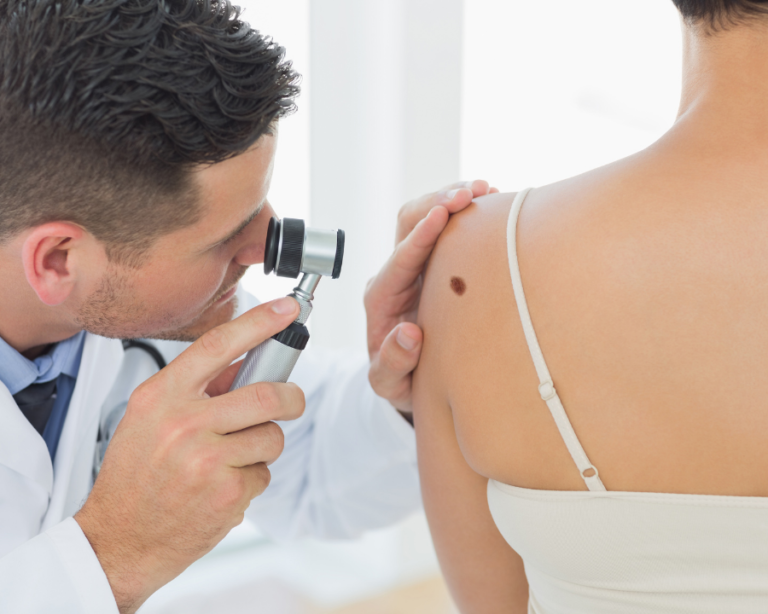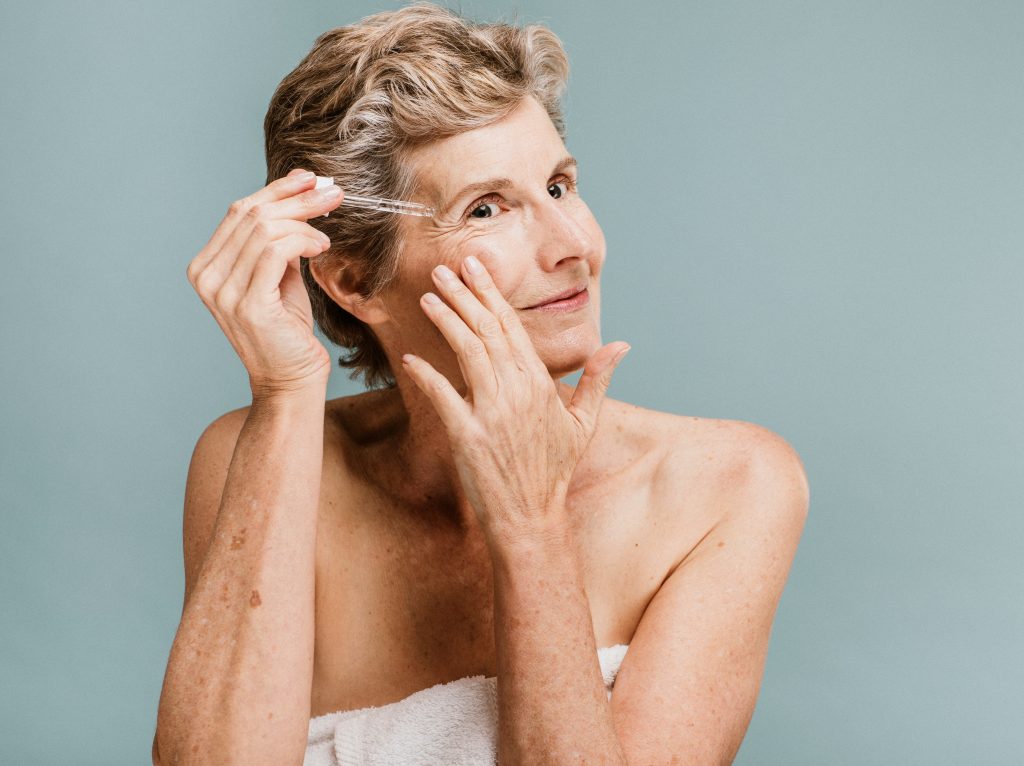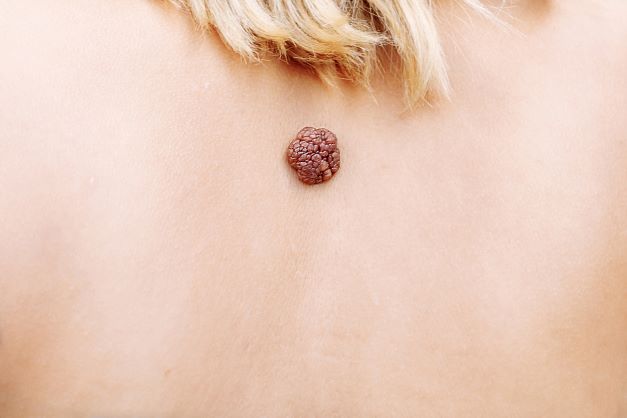Melanoma is the most serious form of skin cancer, yet if it is caught early enough, it is the most treatable. “The estimated five-year survival rate is 98% when it is treated before it spreads to the lymph nodes, yet that falls to 23% when melanoma reaches distant organs,” says Dr. Jeffrey Ross Gunter, a dermatologist at SummitMD Dermatology. “This is why it is so crucial for people to get annual skin cancer body checks by their doctors and to know what to look for. Being proactive and informed really can save your life.”
Melanoma develops when the cells that give the skin its color, or melanocytes, grow out of control. “You’ll see it in many forms,” Dr. Gunter says. “It could be a mole that changes in some way. You might see a spot that looks different from the others that you have or that has more than one color and is growing. You may have a growth that bleeds, stops, and bleeds again. Or it could be a patch of thick skin that grows slowly and looks like a scar. I have even seen melanoma that manifests as a patch of darker skin around a toenail or fingernail. It has all kinds of appearances, so it’s important to educate yourself on what to look for.”
To help people spot melanoma, the American Cancer Society created the ABCDEs of melanoma:
- A is for Asymmetry. One half of the spot is unlike the other half.
- B is for Border, meaning the spot’s border is irregular, scalloped, or poorly defined.
- C is for Color. The spot has varying colors from one area to the next, which could include shades of black, brown, or tan or areas of white, red, or blue.
- D is for Diameter. Melanomas are usually about the size of a pencil eraser but can be smaller when they are diagnosed.
- E is for Evolving. The spot looks different from other spots or is changing in shape, color, or size.
Dr. Gunter recommends checking all over the body every 3-6 months for signs of melanoma, including on the feet and in areas that do not normally get any sun. In addition to what the American Cancer Society recommends in the ABCDEs, you’re looking for any spot or growth that is painful, bleeds, or itches. Keep watch for a sore that doesn’t heal or that does but then returns. The nails are places to monitor, too, as melanoma can develop as a band of color around or under one.”
Dr. Gunter explains that it’s very important to know the risk factors for melanoma. “Anyone who uses tanning beds or gets a lot of sun is at risk of developing it. Those natural and artificial UV rays are very damaging to our skin and can cause melanoma. Your risk goes up by 80% if you have had five or more blistering sunburns, especially if you were between 15 and 20 years old.”
Other risk factors include genetics; deficiencies in the immune system; sun-sensitive skin; having red or blond hair or green or blue eyes; having 50 or more moles, including those that are large or unusual; a family history of melanoma; having had other cancers; and a history of excessive indoor tanning or sun exposure.
“Prevention is definitely important,” advises Dr. Gunter. “That starts with protecting yourself from the sun. Stay out of the sun between 10:00 a.m. and 2:00 p.m., when the rays are the strongest. Stay in the shade, and wear protective clothing. Think long sleeves, even in the summer, and wear a wide-brimmed hat and sunglasses. Use a sunscreen that is water-resistant and at least SPF30. Don’t forget to apply it to your ears, your neck, and your feet. Remember that using sunscreen is very wise if you are skiing. The sun’s rays reflect off the snow, giving people a stronger sunburn. Also, tanning beds should always be avoided.”
By educating themselves and taking steps to protect themselves from the sun, Dr. Gunter says, people can do a lot to avoid developing melanoma. “Always remember to check your skin, especially as you get older. If you see anything that fits even a few of the ABCDEs, go to your dermatologist and let an expert check it out. It can save your life.”
Jeffrey Ross Gunter, MD, FAAD is a board-certified dermatologist at SummitMD Dermatology. He is a graduate of the Keck School of Medicine at the University of Southern California where he was previously a Clinical Professor of Dermatology and Chief Resident of Dermatology at the LAC/USC Medical Center in Los Angeles, CA.
Source: https://www.cancer.org/cancer/melanoma-skin-cancer/detection-diagnosis-staging/signs -and-symptoms.html https://www.aad.org/media/stats-melanoma
View all articles about Melanoma.





